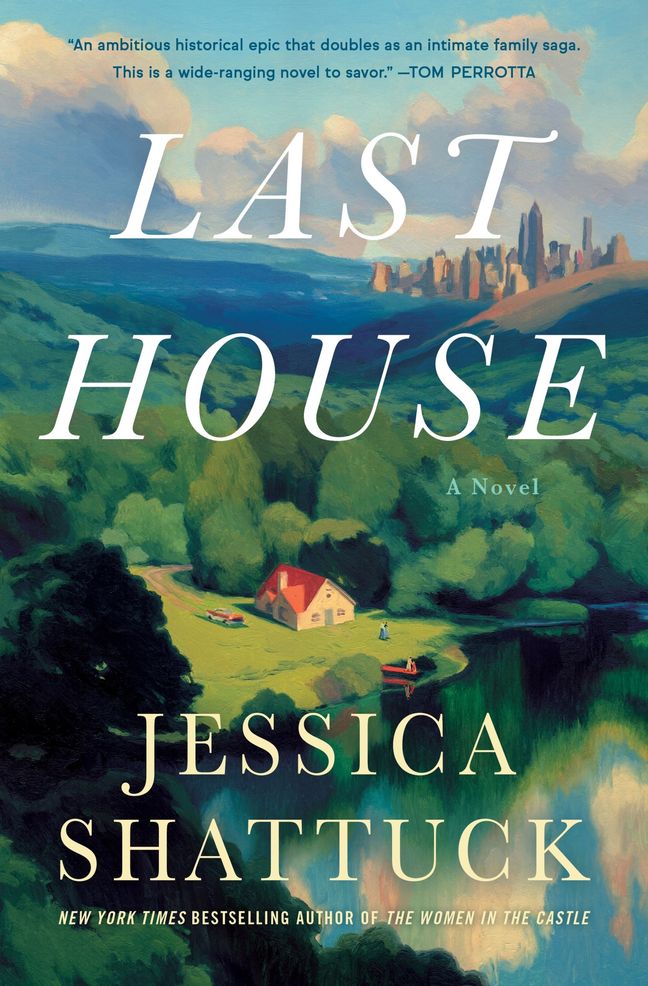
Last House by Jessica Shattuck tells the story of one family over eighty years. It starts with Bet and Nick Taylor who fall in love just before he goes to the Pacific in WWII. Bet is working in intelligence and hopes to continue studying after the war. She is warned that marriage will curtail that plan, but she’s hopeful that is not the case. What Nick likes about her is that she is smart and keen on her work. Well, 1950s America has other plans for Bet.
Nick gets his law degree and is involved in the oil negotiations with Iran and the plans to reinstate the shah. His buddy Carter Weston is in the CIA and has roped Nick into the role. It’s America’s golden age and they are wheeling and dealing across the international stage. Bet is stuck at home folding napkins and editing the Mapleton ladies’ cookbook.
It’s not a rescue but Carter sells the Taylor family a house in rural Vermont. He has inherited a couple of houses in a valley and sells them to his closest friends and allies as part of the “End of the World Club”.
The middle part of the novel shifts to the Taylor kids. Katherine and Harry like the freedom of exploring the woods but by the 60s Katherine is living in New York and is caught up in the protests against the war and the race riots. She’s writing for a radical newspaper and struggling to reconcile her ideals with those of her parents. Nick still works for Big Oil. American youth are getting more and more restless in the face of unwavering government policies, the shooting of Martin Luther King, and the heavy fist of the government. There are groups that resort to violence and Katherine and Harry suffer the consequences of their own activism.
By the end, the novel sweeps along to the point where Katherine is in her eighties and Last House is still standing.
Having just finished The Women by Kristin Hannah, I am struck by the similarities of the political situation in the 1960s and today.
Both books portray the 1960s in the US as a turbulent decade marked by social upheaval and political shifts. The Women outlines how attitudes toward the Vietnam War shifted from initial support to widespread opposition, fuelled by rising casualties and the draft. Last House picks up from there with the racial tensions that led to major civil rights movements, but also to the violent race riots in cities like Detroit and Watts, and then Martin Luther King Jr’s assassination in 1968. Underlying the story of Last House is how Big Oil expanded as an economic force, with rising global influence.
I came away from these books thinking that the central lesson is that social and political progress is neither linear nor guaranteed. The issues of today—war, inequality, and cultural divides—are rooted in unresolved tensions from the past, demanding vigilance, activism, and a willingness to learn from history. We are probably going to get things wrong, but we won’t make them worse by standing up for each other.
If you enjoyed, Long Island (role of women in 1950-70s America) or The Briar Club (different angle on the McCarthy era), then you’ll like Last House.
Give it try. Available at Indigo.ca and fine local booksellers.